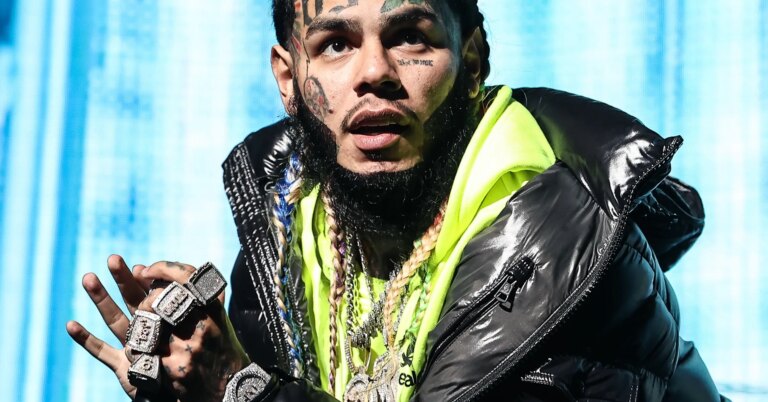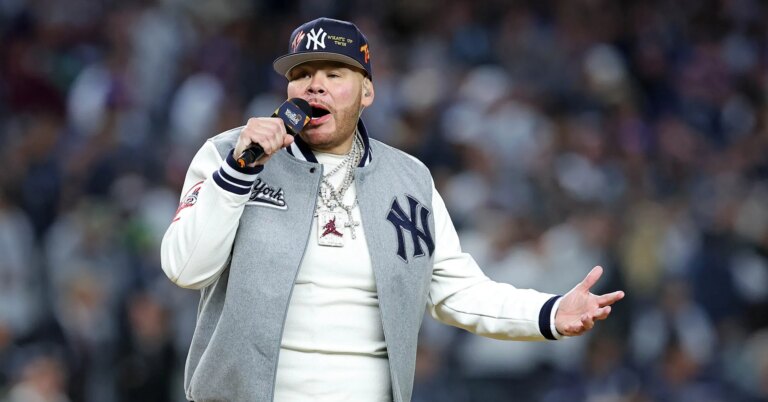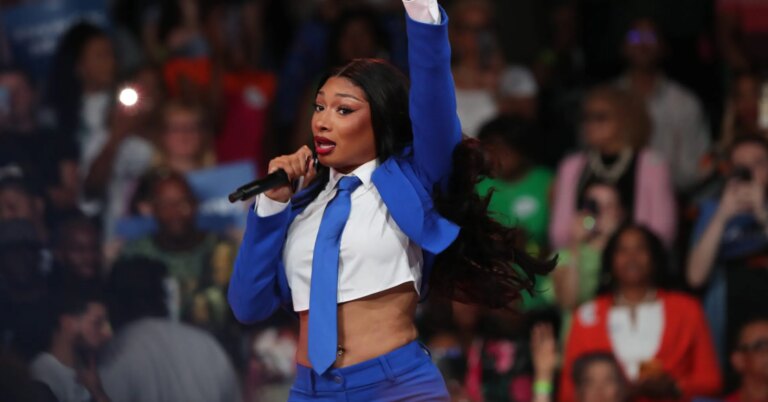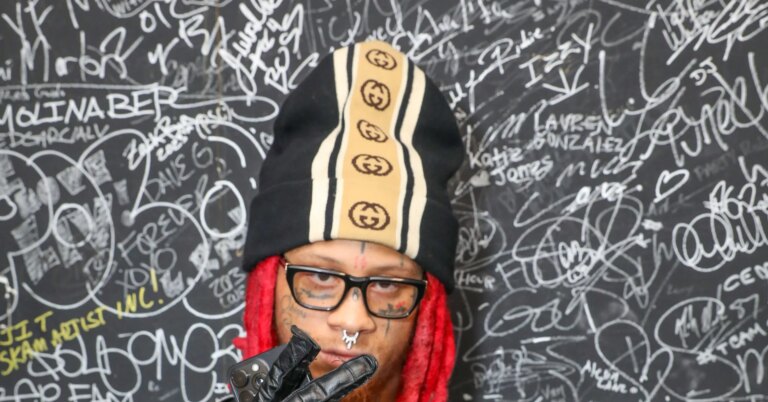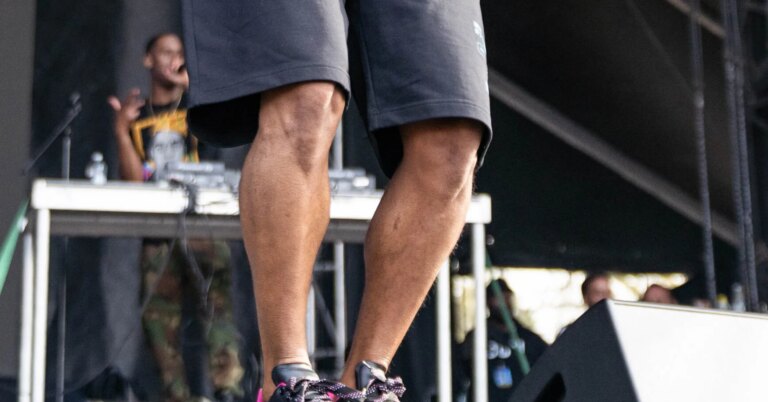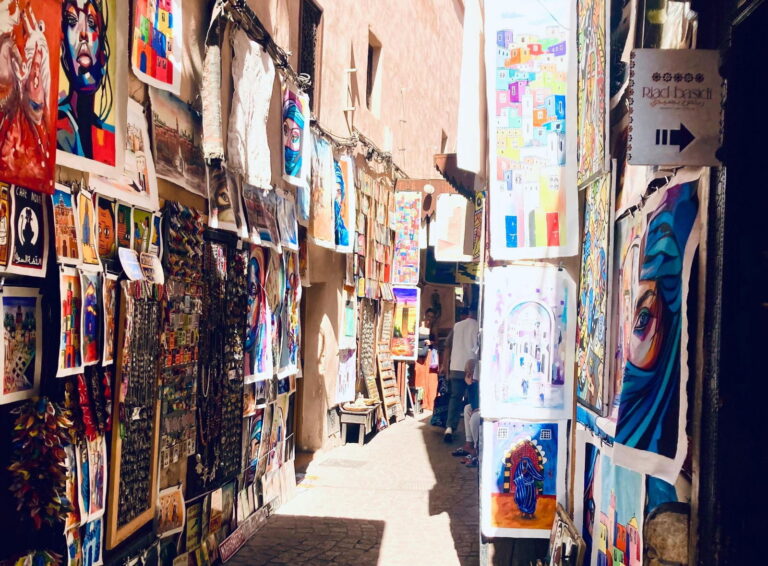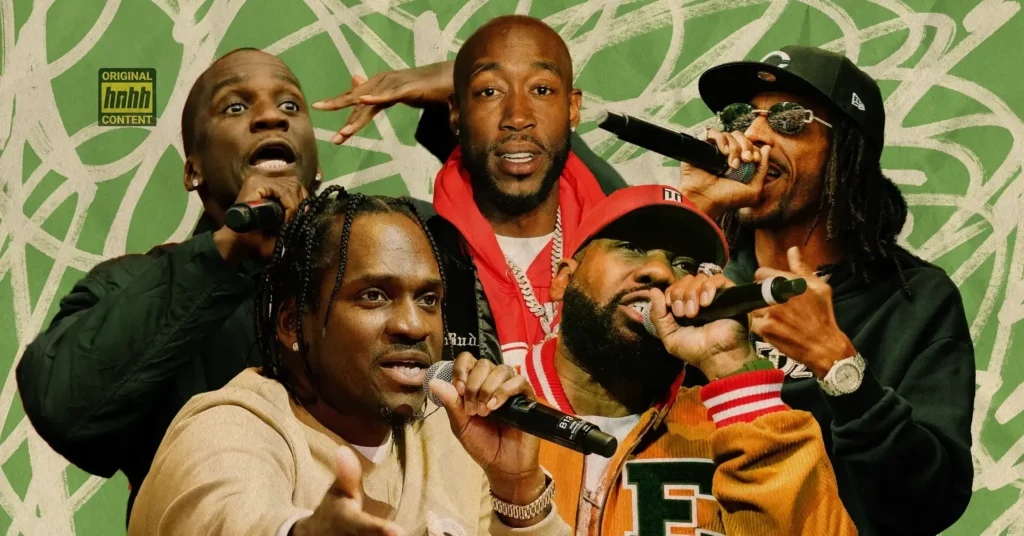
Cocaine is timeless. I do know, it’s a wildly insensitive declare, given what number of lives have been misplaced to its distribution and consumption. But, its presence in social dynamics worldwide can’t be ignored. Partying equals luxurious, and luxurious comes with a pricetag. The value of a brick has gone up, however in line with the U.N., the cocaine market is flourishing—greater than ever. Within the newest UN Workplace on Medication and Crime (UNODC) World Drug Report overlaying as much as 2023, they famous that “manufacturing, seizures, and use of cocaine all hit new highs in 2023, making cocaine the world’s fastest-growing illicit drug market.” Unlawful manufacturing alone rose by a 3rd to three,708 tons that yr.
The streets have all the time mirrored music and tradition, from blues to hip-hop. Typically that reflection lies in drug consumption, different instances in distribution. Over the past decade and extra, debates have swirled about hip-hop’s shifting dynamics—from dealing as a storyline to the rise in habit. Juice WRLD, Wealthy Homie Quan, Gangsta Boo—only a few names misplaced to habit—spotlight this painful dichotomy of survival: suppression and aggression, various outcomes formed by exterior stress. Some numb trauma with substances; others expose themselves to extra trauma chasing a greenback. Discovering readability amid that is no straightforward feat. There are demons in each greenback invoice, the seams of each pair of designer denims, and every fleeting victory.
Coke rap carries a timelessness born of the crack period and the failed struggle on medicine. There was a tone of resistance towards systemic oppression concentrating on Black People on the heart of anti-drug propaganda for hundreds of years. When crack grew to become pervasive in primarily Black, low-income neighborhoods, hip-hop emerged as a automobile to push again—from Grandmaster Flash and The Livid 5’s “The Message,” which challenged drug use, to Raekwon and Jay-Z, who painted themselves as kingpins thriving towards all odds.
Raekwon’s debut, Solely Constructed 4 Cuban Linx, grew to become the blueprint for mafioso rap. With RZA behind the boards, it’s a cinematic masterpiece weaving avenue politics with a craving to flee, helped by Ghostface Killah. That album stays hip-hop’s Holy Grail, even because the style’s sound and content material have shifted—particularly round medicine.

INDIO, CALIFORNIA – APRIL 14: Pusha T performs on the Coachella Stage through the 2023 Coachella Valley Music and Arts Competition on April 14, 2023 in Indio, California. (Photograph by Frazer Harrison/Getty Pictures for Coachella)
In 2025, cocaine rap quietly resurges—not as empty nostalgia, however a reminder that these tales, scars, and ambitions reside deep in hip-hop’s marrow. Artists like Raekwon, Freddie Gibbs, Clipse, and Jeezy aren’t merely revisiting outdated myths. They’re reframing and constructing on them, proving the style’s chilly truths nonetheless burn.
Every has helped preserve this custom alive. Clipse arguably made the largest business splash on this area of interest lately. Let God Kind Em Out, their first album in 16 years, is already a high contender for album of the yr—and deservedly so. Individuals anticipated typical plug speak, however as an alternative obtained a reminder of life as soon as faraway from the streets. Malice’s non secular reckoning and unpacked creativity, alongside Pusha T, felt like a proper integration of the previous. The coke commerce’s tales include each restraint and indulgence—packing a blizzard in a Honda Civic feels brave when the stakes have you ever gripping the wheel at 3-9 crossing state traces. Maybe that feeling comes from Malice’s elimination from that life, unlocking these chapters within the sanctity of Pharrell’s studio at Paris’ Louis Vuitton Headquarters. The consequence? A top-five album shifting over 100K models, in an period when many artists wrestle to crack 50K. Critics may query how these numbers are achieved, however the reality stays: Clipse delivered a potent album that sonically eclipsed releases from Travis Scott and Justin Bieber that dropped the identical day.
That is the evolution of how the drug commerce grew to become a automobile to the American Dream—and, arguably, one other chapter within the cycle of oppression displaying capitalism as a mechanism of exploitation. This discernment issues when understanding how this type of hip-hop artwork is born equally from temptation and greed, survival, and trauma. Freddie Gibbs’ Alfredo 2, produced solely by The Alchemist, stands out with moody, ethereal soundscapes that assist him navigate fame’s pitfalls and previous triggers. On “Ensalada,” Anderson .Paak’s soulful hook holds a thread of hope, but it’s not sufficient to masks the harrowing realities Gibbs paints—waking in chilly sweats, promoting dope to a good friend’s mother. Small moments flip into emotional threads that observe you to the grave. This duality will not be new in hip-hop however has turn into much less prevalent in lots of current releases, particularly from those that didn’t reside by way of the 90s and early 2000s. Such storytelling reminds us of a deeper agenda entrenched in Black communities, the place cocaine, particularly crack, grew to become a logo of hope to some, forming the bedrock of hip-hop’s resilience, grit, and ability all through the 90s.
A typical thread between Gibbs, Clipse, and Boldy James—on his eighth album of the yr—is a dedication to a single producer. Gibbs works with The Alchemist, whereas Boldy’s newest with Nicholas Craven showcases cinematic qualities constant throughout these tasks. This custom traces again to legends like Raekwon and Jeezy, each of whom dropped new tasks in 2025. Boldy’s Late To My Personal Funeral captures the entice’s ethos: consistency and high quality reign supreme in a world the place success is hoarded like a monopoly. Sustaining momentum is discovering mechanisms of survival in a system designed to exhaust and discard laborers. To drop eight tasks a yr with out recycling previous content material, whereas staying attuned to the current, is not only musical output. It’s an software of avenue rules to artwork.

Younger Jeezy throughout HOT 107.9 Birthday Bash 10 at HiFi Buys Amphitheater in Atlanta, Georgia, United States. (Photograph by Rick Diamond/WireImage)
These rules have been laid down over many years, even centuries, and metastasized by way of legends. Raekwon’s The Emperor’s New Garments reasserts the codes he carved on Solely Constructed 4 Cuban Linx. Whereas his debut imagined the mafioso clawing out of the road, his 2025 self embodies the afterlife of that climb: silk materials and opulent meals as trophies, not temptations; plug speak from a person shifting weight with out touching it, a provider off some distant coast. It’s coke rap as each cultural reminiscence and aspiration, retaining the grit intact whereas displaying survival will be as cinematic because the wrestle. Equally, Jeezy didn’t launch a brand new album however introduced nostalgia by way of an orchestral rendition of his debut, TM: 101. Simply as Raekwon revisits the previous with a brand new lens, Jeezy’s motivation for the streets in his heyday will get recontextualized—from entice home to opera home. Shawty Redd’s sticky beats, stripped down by the Shade Of Noize orchestra, show that the sky was all the time the restrict, as Jeezy declared 20 years in the past.
The thread between these rappers will not be solely about artwork however a code fiercely debated in an period the place personas simply crack. Their tales carry reality, whether or not each element will be verified or not, and that ambiguity works in favor of coke rap’s mystique. This area of interest stays an anomaly, inhabited by these lower from a special fabric mentally and lyrically. At the same time as these tales largely keep inside sure circles, and reveals like Snowfall get neglected by the Emmys regardless of compelling storylines, the shortage of celebration for uncooked reality and laborious realities is evident at this time.
On the flip facet lies a generational divide—what the streets and hip-hop as soon as had been is tougher to determine. But trauma persists throughout generations, discovering acquainted vices to manage. As Pusha T instructed Fats Joe and Jadakiss, this period sees elder statesmen proving that the OGs don’t must age out of hip-hop and might nonetheless embody it authentically. At a time when hip-hop has misplaced its soul to a capitalistic regime valuing radio play over replay worth, coke rap brings again a sense lengthy lacking. And so long as artists preserve pushing these uncooked narratives, the tales that formed the blueprint of survival and ambition won’t simply endure however stay timeless.





